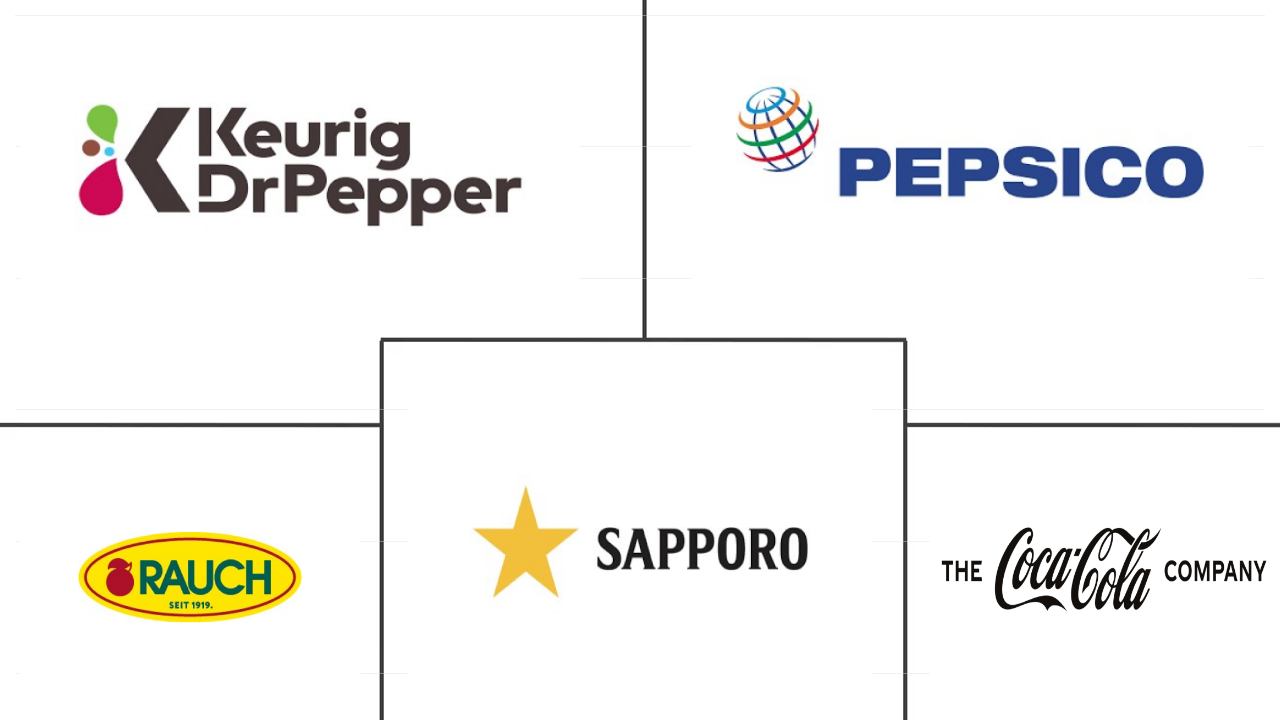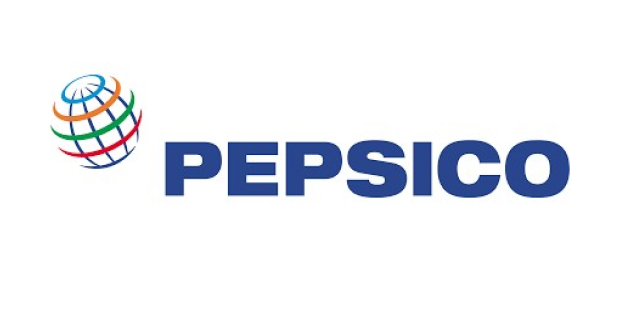Market Size of middle east ready to drink tea Industry
|
|
Study Period | 2018 - 2030 |
|
|
Market Size (2024) | USD 192.6 Million |
|
|
Market Size (2030) | USD 321.6 Million |
|
|
Largest Share by Soft Drink Type | Iced Tea |
|
|
CAGR (2024 - 2030) | 8.92 % |
|
|
Largest Share by Country | United Arab Emirates |
Major Players |
||

|
||
|
*Disclaimer: Major Players sorted in no particular order |
Middle East Ready to Drink Tea Market Analysis
The Middle East Ready to Drink Tea Market size is estimated at 192.6 million USD in 2024, and is expected to reach 321.6 million USD by 2030, growing at a CAGR of 8.92% during the forecast period (2024-2030).
192.6 Million
Market Size in 2024 (USD)
321.6 Million
Market Size in 2030 (USD)
7.26 %
CAGR (2018-2023)
8.92 %
CAGR (2024-2030)
Largest Segment by Soft Drink Type
65.59 %
value share, Iced Tea, 2023
Iced tea offers a diverse range of flavors to cater to varying taste preferences. Among the most favored flavors are traditional black tea, praised for its robustness and versatility.
Fastest-growing segment by Soft Drink Type
10.65 %
Projected CAGR, Herbal Tea, 2024-2030
The market features Herbal and Fruit Infusions in iced tea such as hibiscus, chamomile, and various berry blends, appealing to those seeking natural, calorie-friendly options.
Leading Market Player
42.83 %
market share, PepsiCo, Inc., Inc.

The company is known for its brands Lipton and Brisk, which include many variants such as peached iced tea and lipton green tea with honey & lemon. These products have helped Pepsico brands at forefront in market.
Largest Segment by Country
4.47 %
value share, United Arab Emirates, 2023
Owing to the widespread concerns over weight loss and reducing sugary drinks, the younger generation in the rest of middle east region is embracing the decision to eat healthy.
Fastest-growing segment by Country
10.20 %
Projected CAGR, United Arab Emirates, 2024-2030
Adoption of Western coffee cultures are contributing to the growing RTD Teac market in the UAE, while the interest in green and herbal/botanical teas keeps the RTD tea market strong.
Herbal tea is expected to gain traction over 2024-2030 due to the medicinal benefits associated with it
- Drinking tea has become an integral part of the culture of Middle Eastern countries. In 2023, the sales value of ready-to-drink (RTD) tea in the region surged by 15.64% from 2021. This growth is primarily fueled by consumers' increasing preference for healthier beverages and the convenience of RTD tea, which can be consumed on the go without any brewing or preparation.
- By type, iced tea accounted for a significant share in 2023 across the region. Harsh climatic conditions, especially during the hot summer months in Middle Eastern countries, make RTD iced tea popular as a refreshing alternative to hot tea. Lemon and peach are the most popular flavored ice teas in the region. With the growing health-conscious and diabetic population, companies are expected to use healthier sugar substitutes, such as stevia, coconut sugar, organic honey, etc., to add sweetness to the iced teas.
- RTD herbal is expected to gain more prominence in the future. These teas boast essential nutrients like calcium, magnesium, potassium, and vitamin C, along with immunity-boosting antioxidants. The demand for immunity-boosting products has seen a notable uptick, especially in the post-COVID-19 era.
- When it comes to distribution, off-trade channels dominate the landscape. Among these, supermarkets/hypermarkets hold over 50% of the market share. Their wide product variety and influence on consumer decisions make them a preferred choice. Notable supermarket chains in the region include Carrefour, Lulu, Spar, West Zone, and Al Madina.
Growing consumer demand for convenience-friendly RTD beverages is fueling the market growth
- The RTD tea market in the Middle East is witnessing robust growth, propelled by factors such as shifting consumer preferences, urbanization, rising disposable incomes, and a burgeoning young population. Thus, the sales value of RTD tea in the region surged by 16.50% in 2023 compared to 2021.
- Saudi Arabia dominates the regional landscape, boasting the highest consumption of RTD tea. In 2023, the sales value of RTD tea in Saudi Arabia surged by 22.6% from 2020. The Saudi market for RTD tea is diversifying, offering a broad spectrum of flavors, ranging from traditional black and green teas to herbal blends and fruit-infused options. This market is gaining momentum, driven by the rising demand for on-the-go, convenience-oriented beverages catering to the fast-paced lives of consumers.
- Among the Middle Eastern nations, the United Arab Emirates (UAE) stands out as the fastest-growing market, and it is projected to witness a CAGR of 10.09% in value from 2023 to 2030. The UAE's RTD tea market is expanding, fueled by a growing consumer emphasis on adopting healthier lifestyles, bolstered by heightened awareness of the health benefits associated with RTD tea. Some RTD teas in the UAE are fortified with functional ingredients like antioxidants, vitamins, minerals, and adaptogens, further enhancing their health appeal. Thus, local manufacturers are actively introducing new flavors in response to evolving consumer preferences.
Middle East Ready to Drink Tea Industry Segmentation
Green Tea, Herbal Tea, Iced Tea are covered as segments by Soft Drink Type. Aseptic packages, Glass Bottles, Metal Can, PET Bottles are covered as segments by Packaging Type. Off-trade, On-trade are covered as segments by Distribution Channel. Qatar, Saudi Arabia, United Arab Emirates are covered as segments by Country.
- Drinking tea has become an integral part of the culture of Middle Eastern countries. In 2023, the sales value of ready-to-drink (RTD) tea in the region surged by 15.64% from 2021. This growth is primarily fueled by consumers' increasing preference for healthier beverages and the convenience of RTD tea, which can be consumed on the go without any brewing or preparation.
- By type, iced tea accounted for a significant share in 2023 across the region. Harsh climatic conditions, especially during the hot summer months in Middle Eastern countries, make RTD iced tea popular as a refreshing alternative to hot tea. Lemon and peach are the most popular flavored ice teas in the region. With the growing health-conscious and diabetic population, companies are expected to use healthier sugar substitutes, such as stevia, coconut sugar, organic honey, etc., to add sweetness to the iced teas.
- RTD herbal is expected to gain more prominence in the future. These teas boast essential nutrients like calcium, magnesium, potassium, and vitamin C, along with immunity-boosting antioxidants. The demand for immunity-boosting products has seen a notable uptick, especially in the post-COVID-19 era.
- When it comes to distribution, off-trade channels dominate the landscape. Among these, supermarkets/hypermarkets hold over 50% of the market share. Their wide product variety and influence on consumer decisions make them a preferred choice. Notable supermarket chains in the region include Carrefour, Lulu, Spar, West Zone, and Al Madina.
| Soft Drink Type | |
| Green Tea | |
| Herbal Tea | |
| Iced Tea | |
| Other RTD Tea |
| Packaging Type | |
| Aseptic packages | |
| Glass Bottles | |
| Metal Can | |
| PET Bottles |
| Distribution Channel | ||||||
| ||||||
| On-trade |
| Country | |
| Qatar | |
| Saudi Arabia | |
| United Arab Emirates | |
| Rest of Middle East |
Middle East Ready to Drink Tea Market Size Summary
The Middle East Ready to Drink Tea Market is experiencing significant growth, driven by a cultural shift towards healthier and more convenient beverage options. The increasing preference for ready-to-drink tea, particularly iced tea, is attributed to the region's hot climate and the demand for refreshing alternatives to traditional hot tea. Flavored iced teas, such as lemon and peach, are particularly popular, and there is a growing trend towards using healthier sugar substitutes to cater to the health-conscious and diabetic population. The market is also seeing a rise in the popularity of herbal teas, which offer essential nutrients and immunity-boosting antioxidants, reflecting a broader consumer interest in health and wellness, especially in the post-COVID-19 era.
Distribution channels for ready-to-drink tea in the Middle East are predominantly off-trade, with supermarkets and hypermarkets holding a significant share due to their wide product variety and influence on consumer choices. The market is characterized by robust growth in countries like Saudi Arabia and the United Arab Emirates, where urbanization, rising disposable incomes, and a young population are key drivers. The UAE, in particular, is noted for its rapid market expansion, fueled by a growing emphasis on healthier lifestyles and the introduction of new flavors and functional ingredients in RTD tea products. The market is fairly consolidated, with major players like Keurig Dr Pepper, PepsiCo, Rauch Fruchtsäfte, Sapporo Holdings, and The Coca-Cola Company dominating the landscape.
Middle East Ready to Drink Tea Market Size - Table of Contents
-
1. MARKET SEGMENTATION (includes market size in Value in USD and Volume, Forecasts up to 2030 and analysis of growth prospects)
-
1.1 Soft Drink Type
-
1.1.1 Green Tea
-
1.1.2 Herbal Tea
-
1.1.3 Iced Tea
-
1.1.4 Other RTD Tea
-
-
1.2 Packaging Type
-
1.2.1 Aseptic packages
-
1.2.2 Glass Bottles
-
1.2.3 Metal Can
-
1.2.4 PET Bottles
-
-
1.3 Distribution Channel
-
1.3.1 Off-trade
-
1.3.1.1 Convenience Stores
-
1.3.1.2 Online Retail
-
1.3.1.3 Supermarket/Hypermarket
-
1.3.1.4 Others
-
-
1.3.2 On-trade
-
-
1.4 Country
-
1.4.1 Qatar
-
1.4.2 Saudi Arabia
-
1.4.3 United Arab Emirates
-
1.4.4 Rest of Middle East
-
-
Middle East Ready to Drink Tea Market Size FAQs
How big is the Middle East Ready to Drink Tea Market?
The Middle East Ready to Drink Tea Market size is expected to reach USD 192.64 million in 2024 and grow at a CAGR of 8.92% to reach USD 321.58 million by 2030.
What is the current Middle East Ready to Drink Tea Market size?
In 2024, the Middle East Ready to Drink Tea Market size is expected to reach USD 192.64 million.

